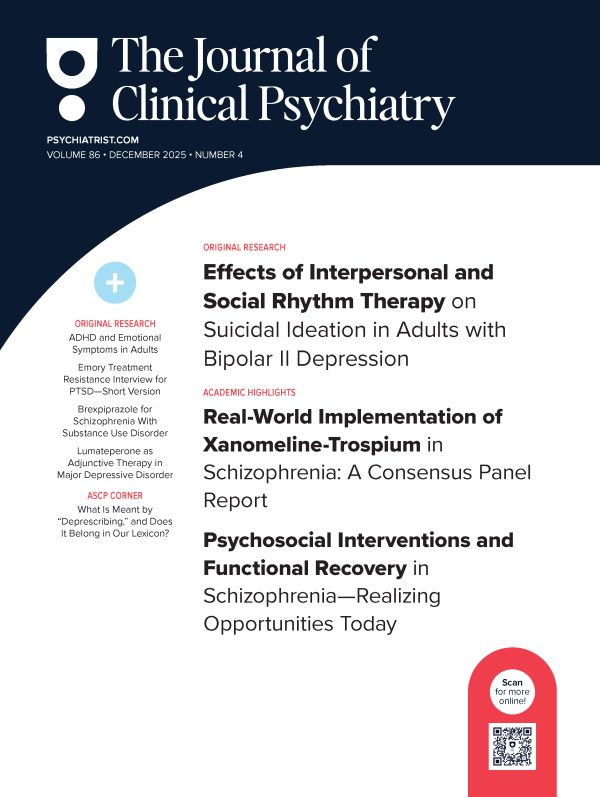Aim: To compare the efficacy and tolerability of mirtazapine and fluoxetine treatment in a sample population consisting of Chinese patients suffering moderate-to-severe depression.
Method: 133 patients with a diagnosis of major depressive episode (DSM-IV) and scoring 15 or more on the 17-item Hamilton Rating Scale for Depression (HAM-D) were randomly assigned to receive 6 weeks of treatment with either mirtazapine (15-45 mg/day) or fluoxetine (20-40 mg/day). Efficacy was assessed using the HAM-D and Clinical Global Impressions scale, with analyses performed on the intent-to-treat sample using the last-observation-carried-forward method. Safety analysis was based on the all-subjects-treated group.
Results: Mean daily doses were 34.1 mg for mirtazapine (N = 66) and 30.7 mg for fluoxetine (N = 66). Thirty patients in the mirtazapine group and 22 in the fluoxetine group dropped out. Both drugs proved equally effective for reduction of the overall symptoms of depression throughout the treatment period. At day 42, the mean reductions in HAM-D total score (compared with baseline) were 11.8 and 10.6 for the mirtazapine and fluoxetine groups, respectively; however, the changes were not statistically significant. Both treatments were well tolerated, with more nausea and influenza-like symptoms observed for the fluoxetine group, and greater weight increase and somnolence for the mirtazapine analog.
Conclusion: Both mirtazapine and fluoxetine were indistinguishable in effectiveness for treatment of depressive symptoms, and both were well tolerated by our population of depressed Chinese patients. In line with analogous Western reports, the safety of mirtazapine and fluoxetine was comparable for our depressed Chinese patients; however, slightly different side effect profiles were noted for the 2 drugs in our study.
Please sign in or purchase this PDF for $40.00.





